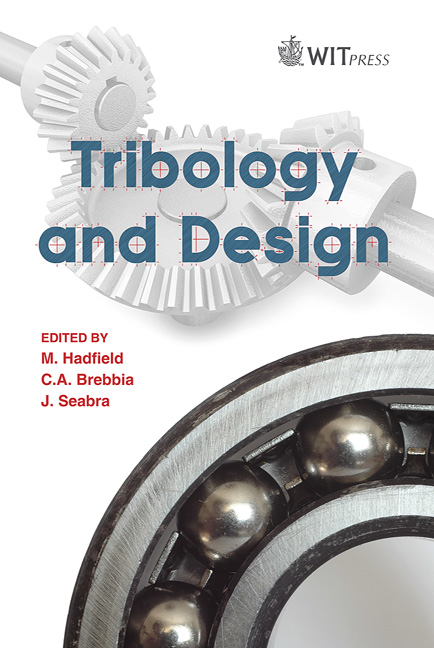Phosphonium Ionic Liquids As Lubricants For Aluminium-steel
Price
Free (open access)
Transaction
Volume
66
Pages
11
Page Range
273 - 283
Published
2010
Size
796 kb
Paper DOI
10.2495/TD100231
Copyright
WIT Press
Author(s)
A. E. Somers, P. C. Howlett, J. Sun, D. R. MacFarlane & M. Forsyth
Abstract
The performance of a series of novel room temperature ionic liquids (ILs) based on the trihexyl(tetradecyl)phosphoniumcation (P66614 +) and a number of novel anions have been studied in pin-on-disk tests using a 100Cr6 steel ball on AA2024 aluminium disks. The anions coupled to the (P66614 +) cation include diphenyl phosphate (DPP-), dibutyl phosphate (DBP-), bis (2,4,4-trimethyl pentyl) phosphinate (M3PPh-) and bis(2-ethyl hexyl) phosphate (BEH-). More traditional anions such as bis(trifluoromethanesulfonyl) amide (NTf2 -) and bromide (Br-) were also investigated. Experiments were conducted at various loads to assess the IL film forming abilities. The results suggest that the structure of the anion is important in forming a surface film that reduces the friction and wear of the aluminium disk. At 30N five of the six ILs tested showed a 30-90% reduction in wear, as determined from wear scar depth measurements, compared to fully formulated diesel oil. The IL lubricant with a diphenyl phosphate anion achieved the lowest wear coefficient, showing a better performance than a typical fluorine-containing IL anion, NTf2. To further investigate wear mechanisms and surface interactions the wear scars were analysed using a scanning electron microscope (SEM) and energy dispersive spectroscopy (EDS). Keywords: ionic liquids, phosphonium, phosphorus anions, phenyl rings, lubricants, tribology, wear test, SEM, EDS.
Keywords
ionic liquids, phosphonium, phosphorus anions, phenyl rings,lubricants, tribology, wear test, SEM, EDS





